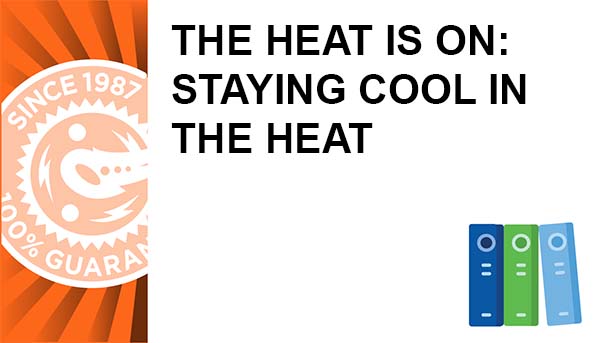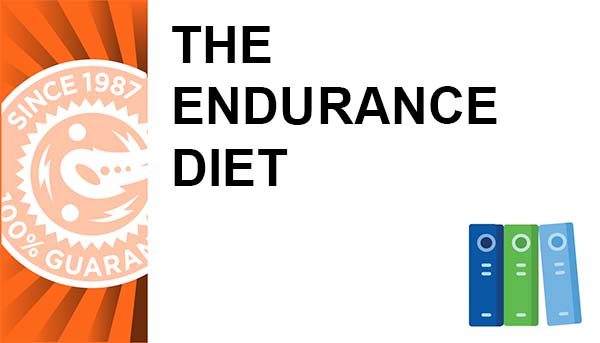By William Misner Ph.D.
Glutamic Acid, or its ionic form, Glutamate, and Glutamine are under-rated "good" dietary amino acids found in most high protein foods. While neither is regarded as essential, each plays important metabolic roles during exercise demand. A balance between glutamine and glutamic acid has been shown to enhance performance variables. On the other hand, when one of these "good" amino acids, the negative-ionic form of Glutamic Acid or Glutamate, is forced to join a sodium salt, an altered "Bad" amino immerges, forming Monosodium Glutamate (MSG), which is neither required for nor metabolically important to endurance. MSG can be a significant performance-inhibiting food additive for some of you. To those allergenically predisposed, MSG may be a lifethreatening substance that should be avoided. While each of these amino acids cross the palate at some time, knowing what each one does, which ones are good for us, and why one should avoid the "altered" version may contribute both to optimal health and performance outcome.
MONOSODIUM GLUTAMATE (MSG)
Monosodium Glutamate (MSG) is the Sodium Salt of Glutamic Acid or Glutamate. The Sodium salt of glutamic Acid enhances the flavor but in large amounts, may cause chest pain, sensation of facial pressure, headaches, burning sensation, excessive fluid retention, and sweating. Medical Doctors call these specific MSG-induced symptoms "Chinese Restaurant Syndrome." Ingestion of MSG raises plasma glutamate concentrations 11- fold; whereas a wholesome protein meal balanced with other amino acids does not raise plasma glutamate. Research reports that the body uses glutamate, an amino acid, as a nerve impulse transmitter and that there are glutamate-responsive tissues all over the body. Abnormal function of glutamate receptors has been linked with certain neurological diseases, such as Alzheimer's disease and Huntington's chorea. Injections of glutamate in laboratory animals have resulted in damage to nerve cells in the brain. Consumption of glutamate as from protein foods, however, does not appear to cause this effect. Most people can consume dietary glutamate in large amounts or their body can metabolize glutamate efficiently. In humans, the probable causes of MSG-induced symptoms are hypothesized related to the sodium-potassium imbalance or the absence of enzymes necessary to metabolize the sodium-rich anion form of Glutamic Acid through normal channels. When too much sodium-rich Glutamate results, dehydration from electrolyte imbalances may result. Any stress to the sensitive systemic electrolyte balance during hyperthermic endurance result in performance-limiting experience and premature fatigue.
Animal studies conducted in the 1980s however raised a significant question: Can MSG-induced glutamates harm the nervous system? The 1995 report from the Federation of American Societies for Experimental Biology (FASEB) identifies two groups of people who may develop a condition the report refers to as "MSG symptom complex." One group is those who may be intolerant consuming in a large amounts of MSG. The second is a group of people with severe, poorly controlled asthma. These people, in addition to being prone to MSG symptom complex, may suffer a reaction resulting in asthmatic symptoms after consuming MSG. The MSG dosage that produced reactions in these people ranged from 0.5 grams to 2.5 grams. In otherwise healthy MSG-intolerant people, the MSG symptom complex tends to occur within one hour after eating 3 grams or more of MSG on an empty stomach or without other food. A typical serving of glutamatetreated food contains less than 0.5 grams of MSG. A reaction is most likely if the MSG is eaten in a large quantity or in a liquid, such as a clear soup. The FDA has proposed that foods containing significant amounts of free glutamate (not bound in protein along with other amino acids) declare glutamate on the label. This would allow consumers to distinguish between foods with insignificant free glutamate levels and those that might contribute to a reaction. While scientists debate the issue, consumption of too much MSG prior to an event may create excessive extracellular fluid stores raising body weight significantly. Allergenic reaction may also be exaggerated.
WHAT PRODUCTS CONTAIN MSG?
Hydrolyzed proteins, or protein hydrolysates contain a form of MSG. Such proteins are acid- treated or enzymatically treated proteins. They contain salts of free amino acids, such as glutamate, at levels of 5 to 20 percent. Hydrolyzed proteins are used in the same manner as MSG in many foods, such as canned vegetables, soups, and processed meats. Hammer Soy and sustained energy contain soy protein isolates and are essentially MSGfree. Monosodium Glutamate [MSG] is not used as an ingredient, processing aid, or additive formulated from the soy protein isolates in either Hammer Soy or Sustained Energy. MSG, measured, as free form glutamic acid is negative at the sensitivity to test methodology at the rate of 0.05% in the soy protein isolates used in the Hammer Nutrition product line. We have no reports on record from an athlete who has determined negative reaction or sensitivity to the soy protein isolates formulated in either Sustained Energy or Soy. Speaking very direct, all of Hammer products are MSG-free from formulation, processing, or as additives.
GLUTAMIC ACID
"Glutamic Acid" is sometimes referred to as "Glutamate" or a negative ion form. Glutamic acid is a nonessential amino acid that functions as an important metabolic intermediate. Glutamic acid can be synthesized from oxoglutaric acid, formed in the metabolism of carbohydrates, so it does not require direct dietary sources. Glutamic acid is biosynthesized from a number of amino acids including ornithine and arginine. Glutamic acid is a nonessential amino acid that the body uses to build proteins. It is also the most common excitatory (stimulating) neurotransmitter in the central nervous system. When aminated, glutamic acid forms the important amino acid glutamine. Because it has a carboxylic acid moiety on the side chain, glutamic acid is one of only two amino acids (the other being aspartic acid) that have a net negative charge at physiological pH. This negative charge makes glutamic acid a very polar molecule and it is usually found on the outside of proteins and enzymes where it is free to interact with the aqueous intracellular surroundings. On a molar basis, glutamic acid is incorporated into proteins at a rate of 6.2 percent compared to the other amino acids. Glutamic acid is also a precursor of GABA, an important neurotransmitter in the central nervous system. Glutamic acid helps transport potassium into the spinal fluid and is itself an excitatory neurotransmitter. Glutamic acid has been used to treat mental retardation, epilepsy, Parkinson's disease, muscular dystrophy and alcoholism. Glutamic acid is one the acidic class amino acids though not considered essential is operant in healthy human metabolism. It is widely distributed in protein foods and even some plant proteins yield as much as 45% of their weight as glutamic acid. Glutamic Acid is a natural occurring amino acid in many proteins. Rich sources of glutamic acid are soy, meat, poultry, fish, eggs, and dairy products. When glutamic acid combines with ammonia, a waste product of metabolism is converted into Glutamine.
GLUTAMINE
Glutamine is vital after exercise for during exercise it is recruited into the energy cycle from lean muscle mass stores. Deficiency may provoke poor recovery or a weak immunity leaving exercise induced viral microbes a paradise to establish symptoms such as the common cold. Glutamine is best ingested post-exercise as it initially breaks down in metabolism giving off ammonia, which may contribute to temporary fatigue during exercise, but it soon neutralizes it by scavenging the excess nitrogen released. Glutamine may affect alertness because it readily crosses the blood brain barrier, optimizes blood serum ph, and may enhance ATP production. For those who exercise regularly, dietary glutamine is essentially an anabolic amino acid contributing to growth hormone release and replenishing cannibalized stores of lean muscle amino acids recruited to support exercise expense. Glutamine as noted above is derived from glutamic acid with ammonia, which is then synthesized from the amino acids arginine, ornithine and proline. Glutamine improves mental alertness, clarity of thinking and mood. It is found abundantly in animal proteins and needed in high concentrations in serum and cerebrospinal fluid. Glutamine can cross the blood-brain barrier with ease whereas glutamic acid arguably does not. Glutamine reduces the craving for alcohol, sugar, and carbohydrates. It is used to elevate release of growth hormone, treat depression, peptic ulcers, schizophrenia, senility, behavioral problems and autism. Glutamine is rapidly lost during lean muscle mass cannibalization during a prolonged endurance effort. Glutamine plays a dynamic role in anabolic muscle recovery and should be replenished immediately after every workout. Glutamine is an amino acid essential for many important homeostatic functions and for the optimal functioning of a number of tissues in the body, particularly the immune system and the gut. Athletes suffering from the overtraining syndrome (OTS) appear to maintain low plasma glutamine levels for months or years.

Ideal serum levels of Glutamine to Glutamate appear to be 9 parts Glutamine to 1 part Glutamate, which is mediated by enzymatic conversion in various parts of the body as required by fluctuating levels. When enzyme function is depressed or electrolytes are deficiency-stressed in the presence of too much glutamate to too little glutamine the optimal ratio fails to support aerobic metabolism. This is the reason why athletes need to read the labels and consider reducing MSG from their diet. "Monosodium Glutamate" appears on labels as "MSG", "Contains Glutamate", "Hydrosolated", or simply a processed protein that contains "Glutamate", should be limited.
GLUTAMINE:GLUTAMATE RATIO: ANABOLIC PERFORMANCE
Based on the changes in Glutamine and Glutamate concentration under different training conditions, researchers proposed an athlete tolerance to training model where glutamine concentration reflects tolerance to volume of work and glutamate concentration reflects tolerance to high intensity training. They suggested that the "Glutamine:Glutamate ratio may globally represent overall tolerance to training." The ideal ratio between dietary Glutamine:Glutamate is easily met when alternating Hammer Soy before a workout, Sustained Energy during the workout, and Hammer Whey after the workout. The Glutamic Acid content in both Hammer Soy and Sustained Energy is balanced with other Soy Protein Isolates. Hammer Soy and Sustained Energy contain Soy Protein Isolates, and there is a definitive difference. A single serving size of Hammer Soy has 26,283 milligrams of amino acids, or 18.9% donated by glutamic acid [4985 mg.] out of the total 36,000 milligram serving size of product. A single serving size of 85,000 milligrams of Sustained Energy contains 1606 milligrams of the naturally-occurring amino acid Glutamic Acid, and is MSG-Free. A huge 6000 milligrams Glutamine is formulated in every serving of the Whey Protein Isolates in Hammer Whey.









1 comment
Great Article